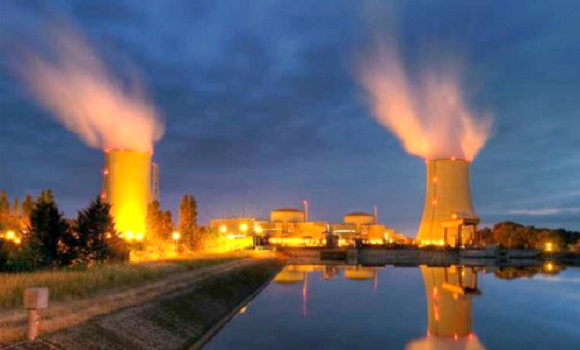
Russian Foreign Ministry spokeswoman Maria Zakharova last week warned about an alleged Ukrainian attack on a nuclear power plant as Kyiv continues to claim to invade the Kursk region.
Russian President Vladimir Putin's foreign minister told local media outlet Tass that Kyiv allegedly attempted to attack the Kursk Nuclear Power Plant (NPP) with a drone.
Kyiv launched its surprise incursion into the Ukrainian-Russian border in Kursk on Aug. 6. Since then, Ukrainian forces have claimed to have seized control of 1,250 square kilometers (482 square miles) of Russian territory and 92 settlements, Ukrainian President Volodymyr Zelensky said last week.
Zakharova warned that there must be an investigation into the alleged attack on the nuclear power plant by the International Atomic Energy Agency (IAEA).
"The IAEA must immediately respond to the act of nuclear terrorism on the part of the Kyiv regime," she said.
In response, IAEA wrote that Russia had informed them that the remains of a drone were found 100 meters (roughly 328 feet) away from the plant's spent fuel nuclear storage facility.
On Aug. 27, the head of the IAEA Rafael Grossi arrived in Kurchatov to inspect the Kursk NPP. During the visit, he saw traces of drone strikes at the station and the remains of drones. He said that it was especially vulnerable because, unlike most modern nuclear power stations, it lacked a containment dome that might offer protection in the event of a strike by drones, missiles or artillery.
Although Grossi emphasized that comparing the situation at the Kursk power plant to what happened in Chornobyl would be an exaggeration, he calls to take the risks associated with nuclear safety very seriously.
"A nuclear power plant of this type so close to a point of contact or military front is an extremely serious fact," he said. "The fact we have military activity a few kilometers, a few miles away from here, makes it an immediate point of attention."
For now, the facility is "operating in very close to normal conditions," he added. “When a plant is operating, the temperature is much higher and if there was a case of impact or something that could affect it, there would be serious consequences.”
The IAEA has urged both sides throughout the 30-month war to refrain from fighting around nuclear plants to avoid a catastrophic incident. (Related: Russia says Ukraine’s drone attack on nuclear plant was designed to set it on fire.)
Russia calls on the IAEA to speak out more clearly on issues of nuclear safety
Russian state news agency RIA quoted Zakharova as saying in a radio interview that Moscow wanted the IAEA to speak out more clearly on issues of nuclear security although she denied it was demanding that the agency should take a pro-Russian line.
"We see both the assessments and the work of this structure (the IAEA), but each time we want a more objective and clearer expression of the position of this structure," Zakharova said.
She noted that this is a systemic problem, because the collective West is trying to "shut up" people working for such international organizations, "does not allow them to tell the truth and confirm the facts."
"This [pressure from the West] not only specifically concerns this direction and this historical period, it began gradually, but it began on a systematic basis," Zakharova concluded.
The Kursk offensive comes more than two years after Putin first announced the "special military operation" into Ukraine, which has been condemned by U.S. leaders and its allies as lacking justification. Regional officials told Putin that 115,000 Kursk residents have so far been evacuated from their homes due to the incursion.
Ukraine has not responded to Russian accusations that it attacked the plant in the Kursk region, close to where its forces launched a surprise incursion that Russia is still trying to repel.
Russia initially aimed for a quick victory over Ukraine, which was viewed as having a weaker military. However, its stronger-than-expected response, bolstered by Western financial support, has blocked Russia from making an easy win, and the war continues to rage on.
The conflict, which began in February 2022, has long sparked nuclear concerns, as Russia owns nuclear weapons and swaths of the region are powered by nuclear power.
Head over to NuclearWar.news for stories related to the possible escalations of worldwide conflicts into nuclear wars.
Watch the video below that talks about Ukraine's imminent attack on Kursk's NPP.
This video is from the TrendingNews channel on Brighteon.com.
More related stories:
Putin fuels World War III fears with deployment of nuclear-capable bombers near NATO borders.
NATO’s endgame appears to be nuclear war.
Sources include:
Please contact us for more information.















